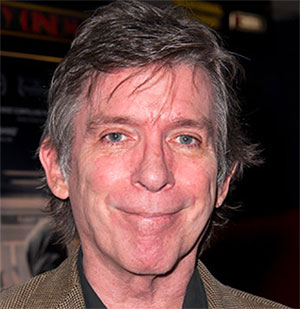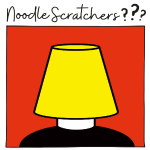Movie review: 'Queer' a fever dream of cinematic sensuality from Luca Guadagnino
Published in Entertainment News
If Luca Guadagnino has proved anything in his remarkable 2024, it’s that he — and his current creative team — are the preeminent depicters of erotic desire on screen. His sexy spring sensation “Challengers” became a cultural phenomenon with its hot-under-the-collar tennis matches, and he assembled the same group of collaborators for the surreal and sweaty “Queer,” an adaptation of the William S. Burroughs novella, written in 1952, published in 1985.
On the surface, “Queer” seems to be miles away from the shiny, sporty thrills of “Challengers,” but in execution, both films are pure expressions of cinematic sensuality and the subconscious. But where “Challengers” finds its horny friction in repression, control and repetition, “Queer” is a sprawling, sometimes grotesque, fever dream of embodied chaos. It is messy, and it doesn’t totally cohere (just how the Beat Generation forefathers like it), but it does adhere to a guiding principle of yearning, expressed in achingly poignant, unforgettable moments of sound and image.
Justin Kuritzkes has adapted “Queer” for the screen, and Daniel Craig stars as William Lee, the Burroughs stand-in, a writer of some means killing time and getting drunk in Mexico in the early 1950s, among a group of gay American expats (Jason Schwartzman, Drew Droege, Ariel Schulman). One night he spies Eugene Allerton (Drew Starkey) — in one of the greatest character introductions of all time, strolling in slow-motion past a cock fight, set to Nirvana’s “Come As You Are” — and becomes instantly obsessed with the mysterious and handsome young man.
“Queer” is about many things, including the consumption of an unholy amount of mind-altering substances, but first and foremost, it is about the absolute embarrassment of being stricken with an all-consuming crush. Craig’s performance is fantastic, baring body and soul, but he is specifically great at the fumbling, awkward choices Lee makes in front of Eugene: a jokey little bow that doesn’t go over well, talking too much and too fast, getting drunk and falling down in front of all of his friends. He is too needy, too touchy, too wanting of Eugene’s attention, which is doled out sparingly.
Starkey terrifically inhabits this breakout role (he is previously best known for the Netflix teen drama “Outer Banks”), and plays Eugene as an inherently unknowable object of desire, because that is what he is to Lee. With a background in military intelligence, Eugene is a cipher, allowing people to project whatever they desire onto him. His sexuality is unclear, and seemingly opportunistic. In a film about wanting, he leaves Lee in such a state that it haunts the man for the rest of his life.
The pair set off for the Amazon in search of a magical drug known as “yagé” (or ayahuasca), as Lee is determined to use it to achieve telepathy. What he wants is to achieve a true, tender connection with Eugene, a channel of clear communication, even if he might be disappointed in what he ultimately hears.
Visually and sonically, “Queer” is a textured, evocative piece about moments of heady anticipation — a high we’re all chasing. There is no drug that could equal the intoxicating power in the cling of a white undershirt; in the angle of a throat, straining for a kiss; in two hands lightly grasping together. There is no high greater than the person you want draping their leg over yours in bed. Lee chases sex, drugs and telepathy, but what he’s chasing isn’t sex itself, but the moments before sex.
No one captures that better than Guadagnino and his team, including cinematographer Sayombhu Mukdeeprom and editor Marco Costa. Production designer Stefano Baisi has recreated 1950s Mexico (or the memory of it) on Italian soundstages, while Trent Reznor and Atticus Ross contribute a score that keens and wheedles, blending with the anachronistic soundtrack and diegetic music.
But it’s Jonathan Anderson’s costume design that takes your breath away. The creative director for the Spanish fashion house Loewe, he outfits the loose-limbed Starkey in appropriately tattered polos and perfectly tailored trousers; Craig in a signature linen suit and interesting spectacles. The costumes are an inherent part of the storytelling, from huarache sandals that Schwartzman turns into a punchline, to flamboyant embellishments on the suits of Droege’s Dumé.
The context of Burroughs writing “Queer” is unspeakably tragic, and Guadagnino refers to it without making the film a biopic; he is more concerned with the character’s state of mind, which is troubled, addled from drugs and booze, and driven almost mad with yearning.
If the film is too long (and it is), it still achieves something indelible because despite all of its hallucinatory flights of fancy, it remains rooted in deeply human emotion. Of all the memorable images, none are quite so affecting as two pairs of legs on a bed. That’s all we really want, after all, right?
———
‘QUEER’
3 stars (out of 4)
MPA rating: R (for strong sexual content, graphic nudity, strong drug content, language and brief violence)
Running time: 2:15
How to watch: Now in theaters
———
©2024 Tribune Content Agency, LLC













Comments